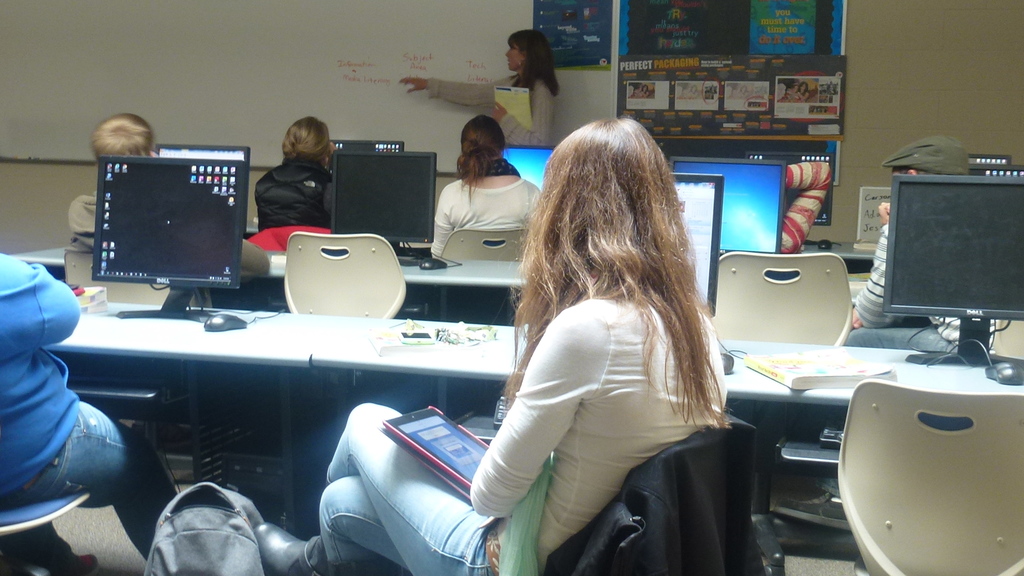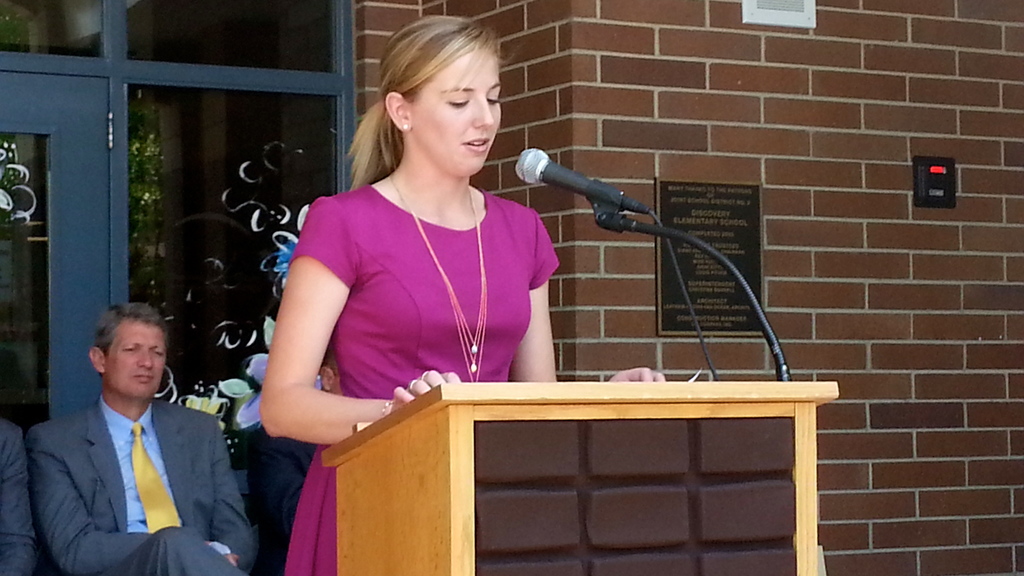EDITOR’S NOTE: Eleven Idaho schools are launching on an experiment this fall. They are using $3 million in state grants to try out methods of using technology in the schools. This is the sixth of a series of stories on the grant recipients.
Barely a month after the Aug. 26 start of the school year, iPads are everywhere at McCall-Donnelly High School.
In the cafeteria, groups of students huddle around their tablets. During breaks, students sit on hallway floors by their lockers, iPads at hand. In computer labs, students work simultaneously on tablets and desktops. And in classrooms, students use the iPads to take notes.
The school-issued iPads — encased in brightly colored, shockproof and water-resistant school-issued cases — are conspicuous. Yet so ever-present that they’re routine. And in McCall-Donnelly, that’s the whole idea.
Changing the culture
The McCall-Donnelly project doesn’t seek to fill a gaping technological void — the recurring argument for one-to-one computing initiatives. A modern, five-year-old high school, McCall-Donnelly has enough computer labs and desktop units to provide a one-to-one environment.
And while many of Idaho’s 11 technology pilot schools are using state grants to pursue aggressive or lofty academic goals, that really isn’t the case with McCall-Donnelly. For two straight years, McCall-Donnelly has received top marks in Idaho’s five-star rating system.
“It wasn’t about us finding a gap,” principal Tim Thomas said. “It’s just a cultural thing.”

But like other schools, McCall-Donnelly had adopted a “bring your own device” policy, with mixed results. “The kids that needed them the most, that wanted them the most, were the ones that didn’t have access to them,” said Thomas. The $150,000 grant changes that, by making iPads available to all of the school’s 300 students.
The iPad use is across the board, from research and writing that is central to the new Idaho Core Standards to science data analysis. But for many students, the iPad is a convenient, one-stop place to take and compile notes. “I really like the idea of not having to take 15 books on the bus,” says Alix Stanley, a junior.
And now, students want more. They want to know when they’ll have more access to digital textbooks, so they can have more of their learning material compiled in one place. “That’s the biggest question I’ve gotten,” says Brooke Thomas, a senior and one of the founding members of McCall-Donnelly’s student “iClub,” an in-house help desk for students and faculty.
Doing school differently

The McCall iClub and the iPad pilot grew out of political father-and-daughter conversations between Tim Thomas and Brooke Thomas.
After Idaho voters rejected the Students Come First laws — including Proposition 3, which would have provided state-issued laptops to all high school students — Brooke Thomas began wondering about the future of technology in school. And like her fellow student-athletes, she wanted a compact way to take her schoolwork on long bus trips to road games.
She requested an iPad, and Tim Thomas got her one, at the school’s expense. But the tablet came with strings attached: He assigned her to examine how students could “do school” differently.
Her approach was strategic. First, she piqued classmates’ interest by showing how she could use a tablet to take and organize notes, work on PowerPoint presentations, and access textbooks and reference materials. Second, she got students involved by launching the iClub; some 50 students quickly signed up, agreeing to collaborate with teachers and help fellow students incorporate iPads into their school routines. Third, she got the school’s faculty on board by leading a presentation on how she used iPads for learning.
Her one-student pilot project became the centerpiece for the school’s successful grant application. “Using technology to solve problems is the way students need to learn to be successful in today’s world,” she wrote. “Students and teachers who collaborate through the iPad is the new way of learning.”
A student-led process
Tim Thomas expects his students to use their iPads responsibly. They are allowed to treat the tablets as their own — and download anything from learning apps to music files. So far, he says he has had to deal with only one disciplinary issue: an inappropriate Internet search. Teachers, meanwhile, are in charge of dealing with students who goof off, or play games during class time.
Thomas doesn’t just expect his students to stay out of online mischief. In a district with a technical staff of two employees, Thomas counts on students to take a lead role in the iPad rollout.
That’s where the iClub enters the picture. Before the start of the school year, iClub members prepared the iPads for distribution. They held between eight and 10 training sessions at the start of the year. And when Apple rolled out the new iOS7 operating system for iPads, sophomore Gabe Martineau took the lead in writing instructions for the installation.
The iClub students also work with faculty, in what Thomas calls a “flipped” learning model. Two iClub members are assigned to each teacher; they meet once every two weeks, or more often as needed, to discuss the iPad project, and review apps that might work well in the classroom.
For teachers, who received their iPads at the same time as the students, it’s been a quick learning curve. “They’re from a different generation,” senior Keenan Walgren said.
But business technology teacher Shelly Chamberlain downplays the generation gap. “We’re all on the same page on this. We’re all learning together.”
More stories about the 11 Idaho schools using $3 million in state grants to try out methods of using technology in the schools:
- A schoolwide Chromebooks project at Kuna Middle School.
- A career-oriented laptop pilot at Middleton High School.
- An attempt to reverse achievement gaps at Parma Middle School.
- A writing emphasis at Weiser’s Park Intermediate School.
- A collaborative learning effort at Meridian’s Discovery Elementary School.
